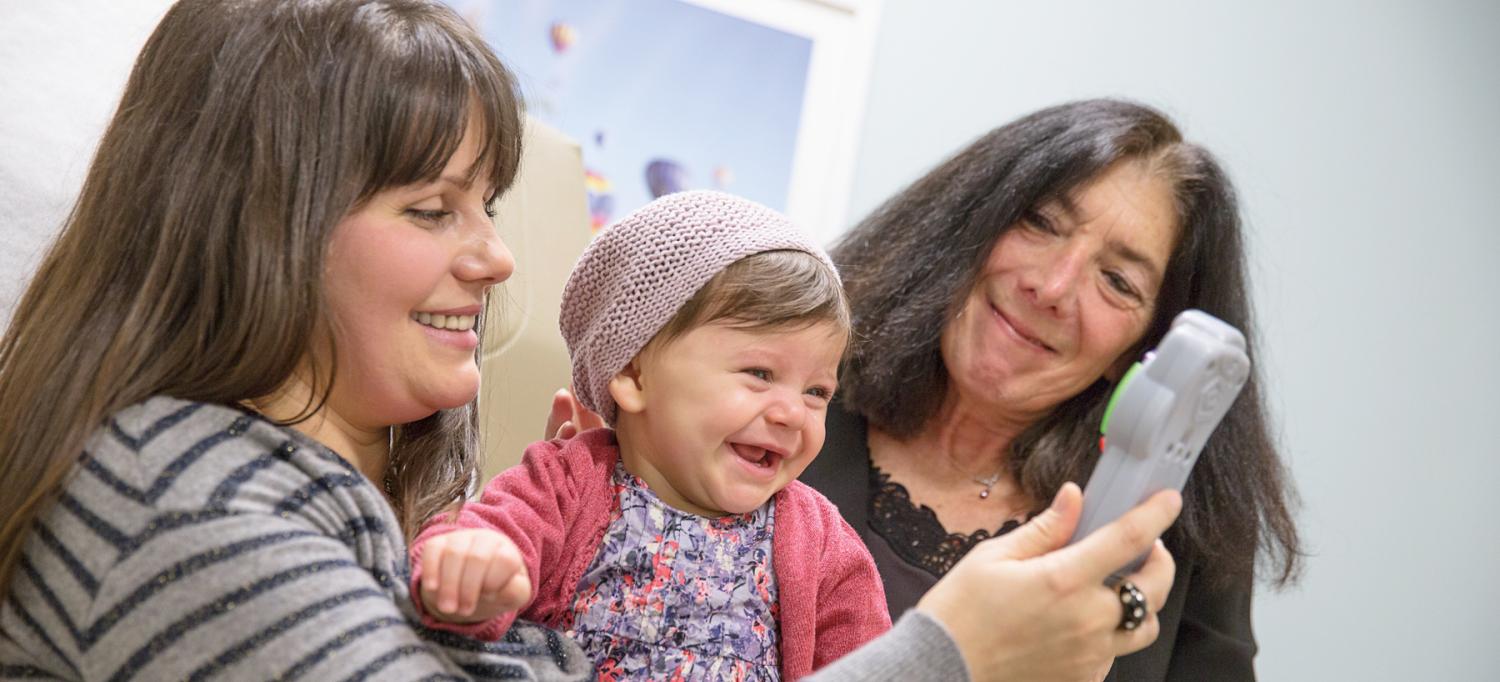
Jill P. Buyon, MD
Photo: Andrew Neary
Expectant mothers with lupus face an array of potential adverse pregnancy outcomes, including fetal or neonatal death, delivery before 36 weeks, a small-for-gestational-age neonate, and preeclampsia. Mothers with anti-Ro antibodies also may give birth to children with cardiac and/or cutaneous disease referred to as neonatal lupus. Several recent studies by NYU Langone researchers, however, have identified multiple biomarkers that may help predict and manage the associated risks and improve outcomes.
Among the advances, Jill P. Buyon, MD, the Lady Va and Sir Deryck Maughan Professor of Rheumatology, director of the Division of Rheumatology, and director of NYU Langone’s Lupus Center, first authored a multi-center study concluding that pregnancy for women with lupus is safer than previously thought. The National Institutes of Health-funded study of 385 expectant mothers found that 81 percent delivered full-term, normal-weight, and healthy babies.
The study, part of the Predictors of Pregnancy Outcome: Biomarkers in Antiphospholipid Antibody Syndrome and Systemic Lupus Erythematosus (PROMISSE) multi-center collaboration, under the directorship of Jane Salmon, MD, the Collette Kean Research Professor at Hospital for Special Surgery, also identified multiple risk factors for adverse outcomes. Beyond the presence of active disease and flare-ups during pregnancy, Dr. Buyon and her colleagues linked a positive lupus anticoagulant test, antihypertensive use, absence of a rise of complement 3, and low platelet count with adverse pregnancy outcomes.
For pregnant women with inactive or stable mild to moderate SLE and none of the identified risk factors, the study found infrequent flares and highly favorable outcomes. “Our new study is quite reassuring since in the majority of cases, both mother and baby can do well if lupus is under control at conception,” Dr. Buyon says.
New Markers for Cardiac Neonatal Lupus
Related studies are identifying new biomarkers that may help doctors assess the severity of the major cardiac manifestation of neonatal lupus, which includes congenital heart block and cardiomyopathy. Mothers with one newborn afflicted by the condition have a significantly higher risk of having another baby with the same condition.
Amit Saxena, MD, assistant professor of medicine, says complete heart block is irreversible, meaning that associated markers may not initially aid in prevention. “With biomarkers, we can try to gauge the severity of the disease in order to treat neonates and children more effectively, and try to find therapeutic targets that we might be able to use to prevent the disease in the future with novel drugs,” he says.
Although exposure to maternal anti-Ro antibodies is required for heart block, only 2 percent of those exposed in utero ultimately get the condition. Dr. Saxena says the NYU Langone-led National Research Registry for Neonatal Lupus, which includes children with a myriad of manifestations of neonatal lupus such as cardiac disease, rash, liver abnormalities and cytopenias, their unaffected siblings, and their parents, has allowed the team to test whether other specific biomarkers might better predict disease onset and disease severity.
The researchers found that levels of C-reactive protein, or CRP, in cord blood may provide one such marker. Patients with cardiac neonatal lupus had elevated levels of the protein, whereas their unaffected siblings did not. The finding showed for the first time that exposure to a maternal antibody can induce a fetal inflammatory response.
Further efforts suggested that CRP is associated with both the development and severity of disease. “Now we have a biomarker that’s easily used because it’s so common, and we can track it in children to get a sense of how much inflammation is going on and how aggressively we may need to treat these patients after birth,” Dr. Saxena says.
The collaborators also found elevated levels of the N-terminal of the prohormone brain natriuretic peptide in affected children, suggesting its potential as a diagnostic during amniocentesis. Similarly, the research found a positive association between neonatal heart block and elevated levels of cardiac fibrosis markers, including matrix metalloproteinase-2, and the urokinase plasminogen activator, its receptor and plasminogen proteins. An assessment of vitamin D yielded less clear results, though the data hinted at a link between higher levels in pregnant mothers and ultimately less severe symptoms in their affected children. If that link is borne out, the researchers say, optimizing maternal vitamin D levels might aid the management of anti-Ro positive pregnancies.


